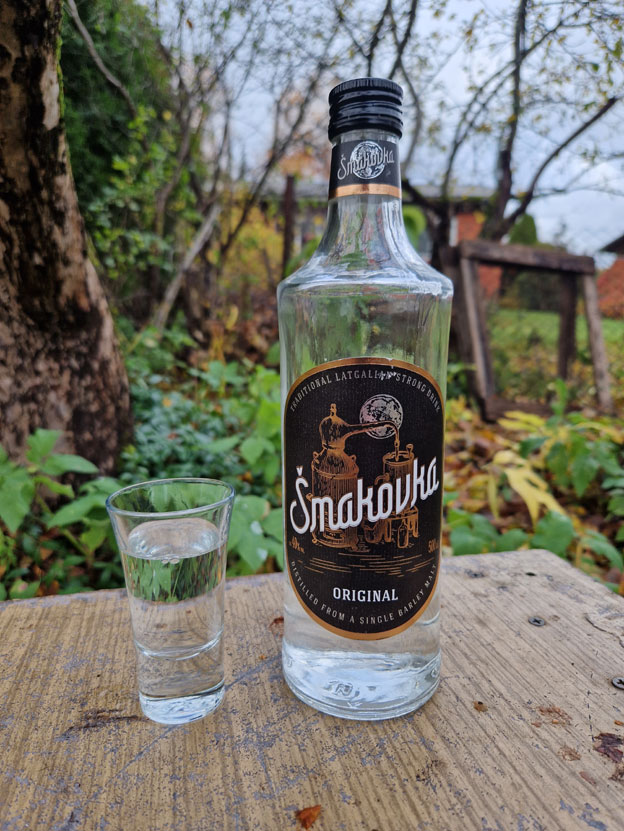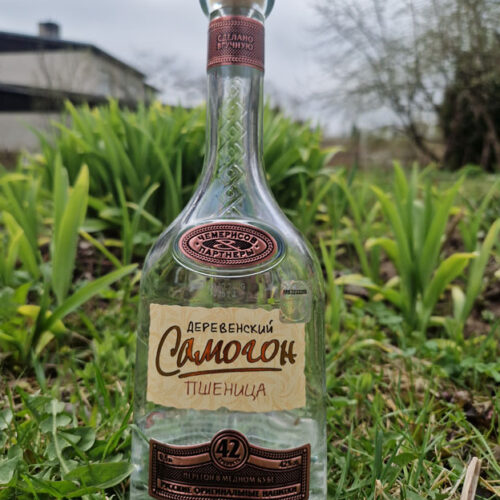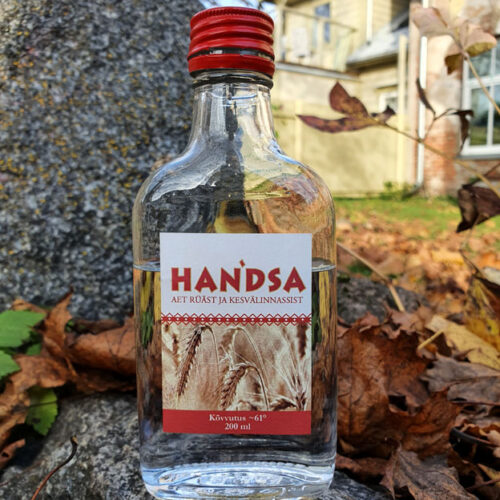
Šmakovka is a strong alcoholic drink from eastern Latvia. It’s made from grain, usually barley or rye, or a mixture of both. Traditionally it’s been distilled at homes with hand made equipment. In western and northern Latvia it is known as kandža. Šmakovka is such a traditional drink that there is also a museum dedicated to it in the city of Daugavpils in eastern Latvia. The museum exhibits equipment used for home distilling, vats and bottles used for storing and distributing it, as well as stories about the conflict between the distillers and the authorities. Nowadays, the production of šmakovka is illegal, but when it is small-scale and made for personal use, it is practically frowned upon by the authorities. Latvian hardware stores also sell parts for the construction of distillation equipment.
Šmakovka is also legally produced at least by the brewery Cēsu Alus, which is located in the city of Cesis in western Latvia. Šmakovka is apparently made from the wort used to make beer, which has been distilled to about 65% strong alcohol and then diluted to 40% bottling strength. Compared to vodka, which is made from 96% rectified spirit, Šmakovka has more of the grain aroma. Šmakovka from Cēsu Alus, is quite widely sold in Latvian food stores, costs around €6.50 in a 50 cl bottle.
The nose has the common grainy mash aroma. It has the same slightly fruity aroma as moonshine made from sugar. The taste is rather smooth, grainy and a little sweet. There is almost no fused alcohol left on it, but still so much that, compared to vodka, Šmakovka has a bit more kick. The ethanol burn is not sharp at any point, but it burns longer than vodka in the aftertaste. It does have a piquant aroma, as the manufacturer promises in its product brochure, but certainly less than in the traditional stuff made with home equipment. So it’s a kind of large-scale producer’s moonshine. Šmakovka offers a good variation to regular vodka. It’s recommended to enjoy chilled schnapps at a dinner table.
83/100


